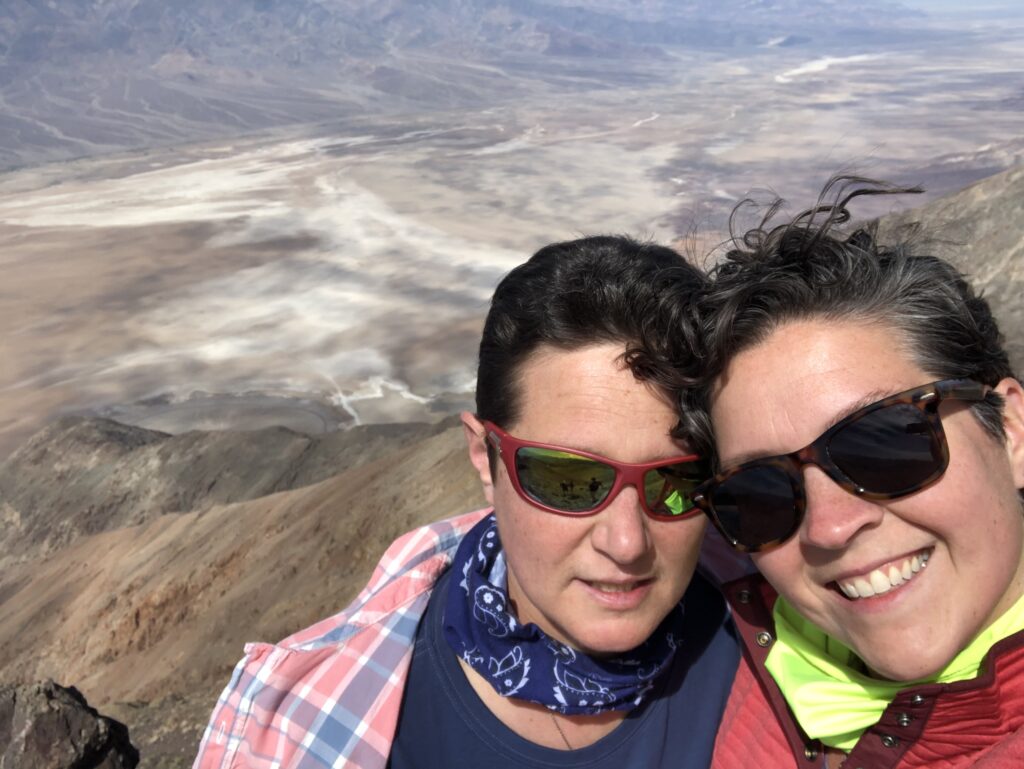
Death Valley is an amazing place and well worth the couple hour drive from Las Vegas. I have lost count of how many times I have visited, and in researching information about the park I realized how little I have seen. We haven’t had the opportunity to stay overnight in the park, and therefore have had limited time to truly explore. I have completed zero hikes to date and not seen all of the points of interest in the park. Death Valley National Park is over 3.4 million acres and is located in eastern California. It is the largest National park outside of Alaska and is surrounded by six mountain ranges. It’s the hottest, the driest, and lowest elevation place in the United States.
Within the park there are nine campgrounds, a motel, restaurant, gas station, and a general store. Bad water basin boasts the lowest elevation in the United States. Furnace creek the “metropolis” of Death Valley and recorded the highest air temperature in 1913 of 134 degrees. What I love about Death Valley is the vastness and beauty. It’s not just the grandeur and enormity of the park it’s the minute crystals in the salt flats and the two inch long fish, which only exist in certain springs throughout the park. The colors of artists palette bad lands, and the magnificent sites of the basin from Dante’s Peak. Death Valley has a way with making you feel small, and for most of the year your very survival could depend on a properly functioning air conditioner.
The Geography
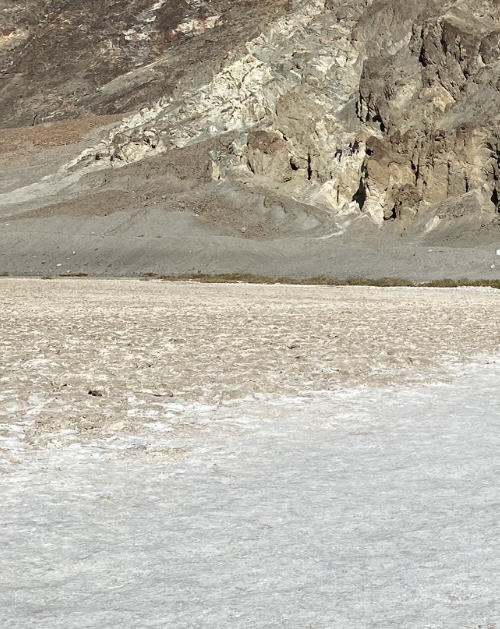
Death Valley is a geological wonder. The valley is included in the Great Basin of the west, which envelopes most of the State of Nevada. A large portion of Utah and California, as well as portions of Idaho, Oregon, and Wyoming. This entire area is called an endorheic water shed. This simply means all the water in this basin drains inward, there are no outlets to the ocean. There are still rivers and creeks and springs, but much of this water evaporates with the extreme temperatures that can be reached.
This phenomenon has led to the accumulation of salt and other minerals in Bad Water basin, which is almost two hundred square miles. At the end of the last ice age, Lake Manly occupied the basin. It was six hundred feet deep and more than sixty miles long. Over thousands of years the lake disappeared, The Amargosa river feeds water into the valley in the spring and after rain events, but much of this is never seen above ground. Additionally runoff makes its way down from the high peaks. This runoff carries minerals, primarily sodium chloride (salt), along with it to the basin. Because there is no outlet, most of the water just evaporates in the heat of the desert leaving the minerals behind. Scientists estimate the salt flats, as well as areas like the Devil’s Golf Course could be hundreds to a thousand feet deep.
Another interesting geological process happening is the tearing apart of the bottom of Death Valley. Because of faults on both sides of the Valley it is being stretched and the valley floor is dropping while the adjacent mountains are rising. Telescope peak is 11,331′ tall and rises about 10000′ straight up from the valley floor, an impressive sight to behold.
My First Visit to Death Valley
I vividly remember my first visit to the park. I was visiting family in Las Vegas with my two year old daughter. We had a rental car and I was excited to see Death Valley with my own eyes. It was February, and forecast to be a beautiful day, I decided to make the couple hour drive to the National park. First we visited Dante’s view and I was instantly hooked! From there we proceeded to Furnace creek and chose our route through the park.
I decided to drive south through the park and visit all the sights we could see along the way. We would exit the park through the Shoshone gate and make our way back to Vegas from there. The hot dry air was a startling contrast to the New England winter weather we had been experiencing just a couple of days before at home.
A brief walk along the boardwalk in Badwater basin, helped me realize how vulnerable us humans are in the desert. Little to no water, vast distances, excessively high heat all of which can quickly lead to dangerous situations. The sun reflecting off the incredible white basin took my breath away in my first few steps. Even on this reasonable temperature day in February, I became acutely aware of how dependent my daughter and I were on our rental car and its air conditioning.
Feeling Vulnerable
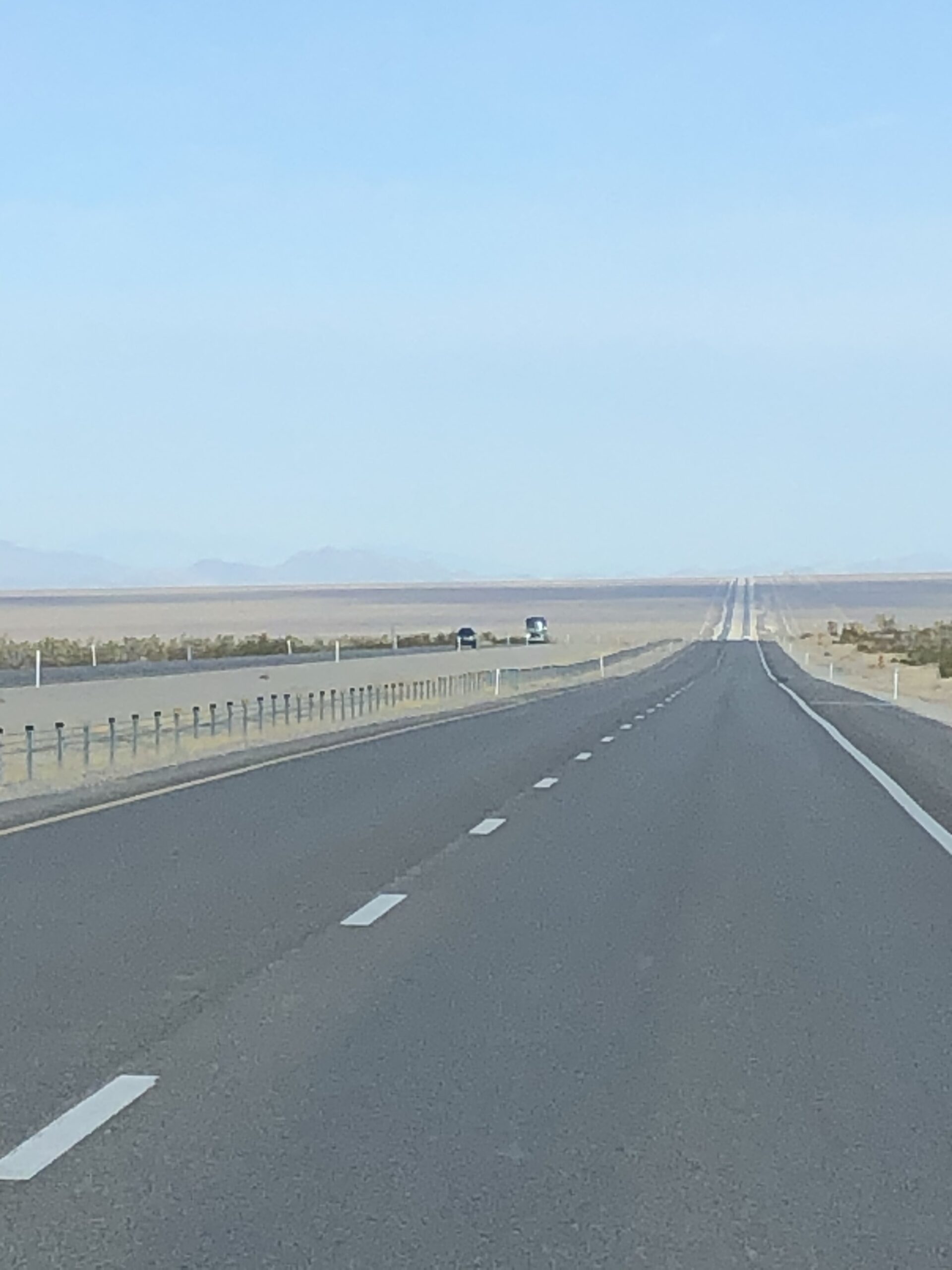
It’s not just the park which is enormous and vast. the approaches to park from the east are also remote. Whether driving through Parahump, Shoshone, or Beatty plan on long stretches of incredible desert landscapes. Today in 2024 services are available but spread out, and it’s necessary to be aware of resources such as water and gas and where the next re-fill may be. Cell service is spotty at best.
But, my first visit was in 1997, there were no cell phones. If we broke down, we would be at the mercy of strangers to stop and help us or get word to someone who could. It would be up to me to figure out how to keep my two year old daughter safe and cool in the unrelenting sun and oppressive heat of the desert. I briefly thought, I should have brought more snacks and definitely more water. Fortunately, the car worked exactly as it should and safely delivered us back to Vegas after a day of the most incredible experiences I had ever had.
Dantes View
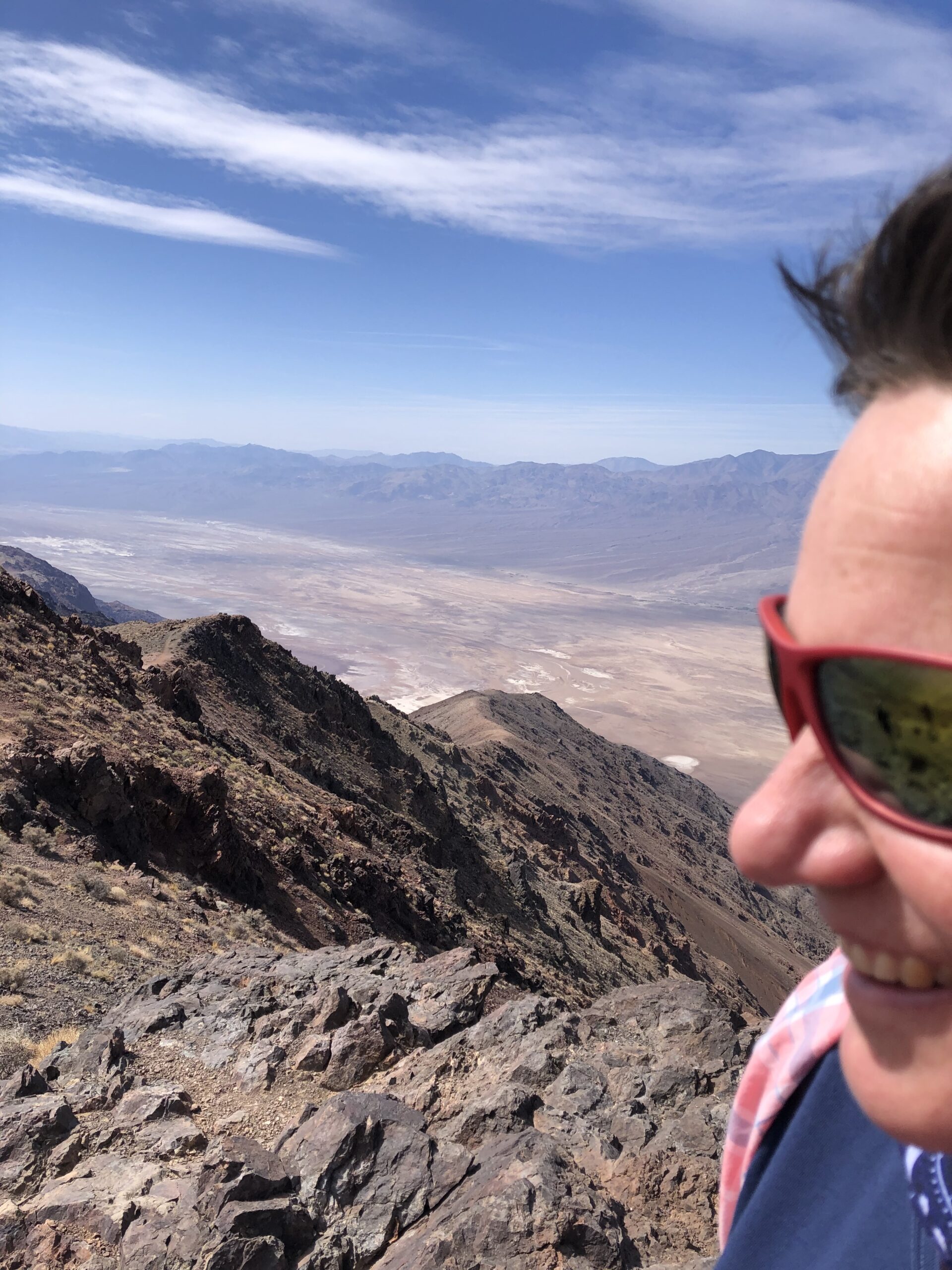
Dante’s View, in my opinion, is the best places to try to absorb the enormity of the National Park. On that first visit driving up the narrow paved road through the canyon, which gives way to open stretches of unobstructed views took my breath away. My fingers tightly gripping the rental car’s steering wheel. I was conflicted not wanting to take my eyes off the meandering mountain road and wanting to gaze into the landscapes I have never before seen.
I was excited when we safely reached the summit parking area. Quickly I unbuckled and set-free my daughter from the restraints in the rental company car seat and together we proceeded to the short hike up to the highest point. The exhilaration of the drive and the magnificence of the view, sitting was all I could do. It could have also been the 5475′ elevation and carrying my two-year old the couple tenths to the summit.
I just remember sitting there looking over Bad Water basin and across to the Panamint range and seeing Telescope peak at 11049′. On a clear day, which it was, Mt.Whitney (14505′) the tallest mountain in the lower forty-eight can be seen. I’m not sure if I saw Mt. Whitney that day.
Badwater Basin
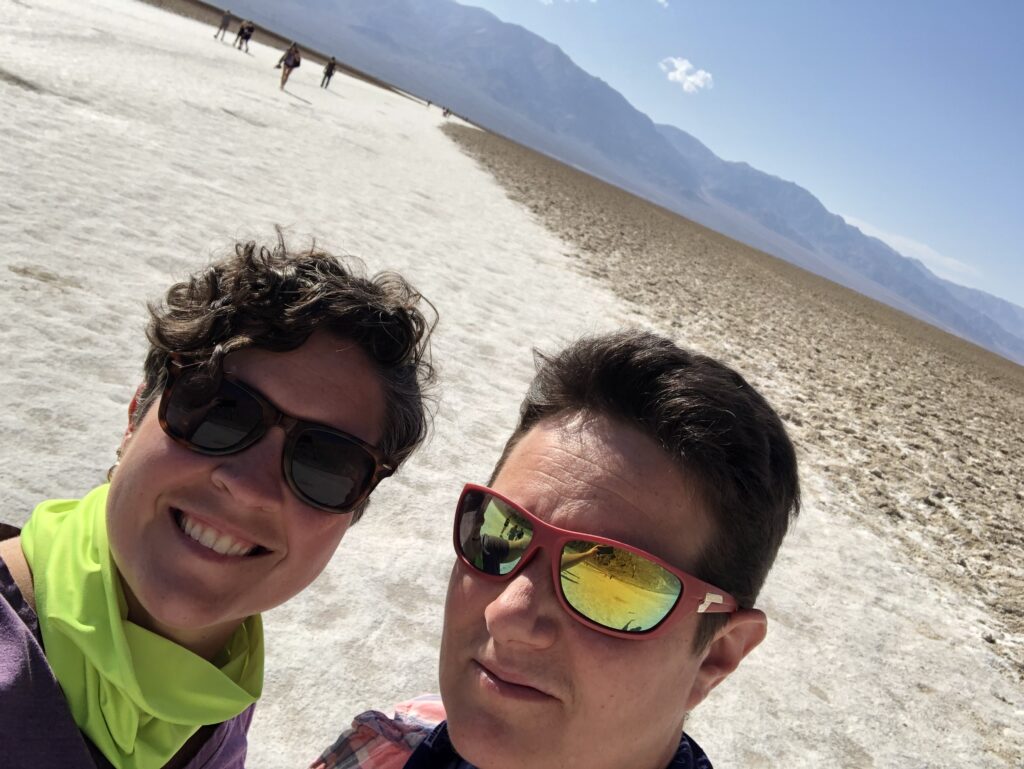
Bad water basin is the lowest point in North America with a depth of 282′ below sea level. Interestingly it’s less than eighty-five miles from the highest point in the lower forty-eight, majestic Mt. Whitney in the Sierra Nevadas has an elevation of 14505′. The salt flats cover almost two hundred square miles and are made up of mostly sodium chloride, as well as borax, gypsum, and calcite.
The basin’s name comes from a small spring-fed pool of undrinkable water. A mule accompanying an early surveyor would not drink the water because of the high amount of salinity, thus it became known as Bad Water Basin. However, the salinity does not mean there is no life, many plants and animals make their home in the waters of the basin.
282′ Below Sea Level!
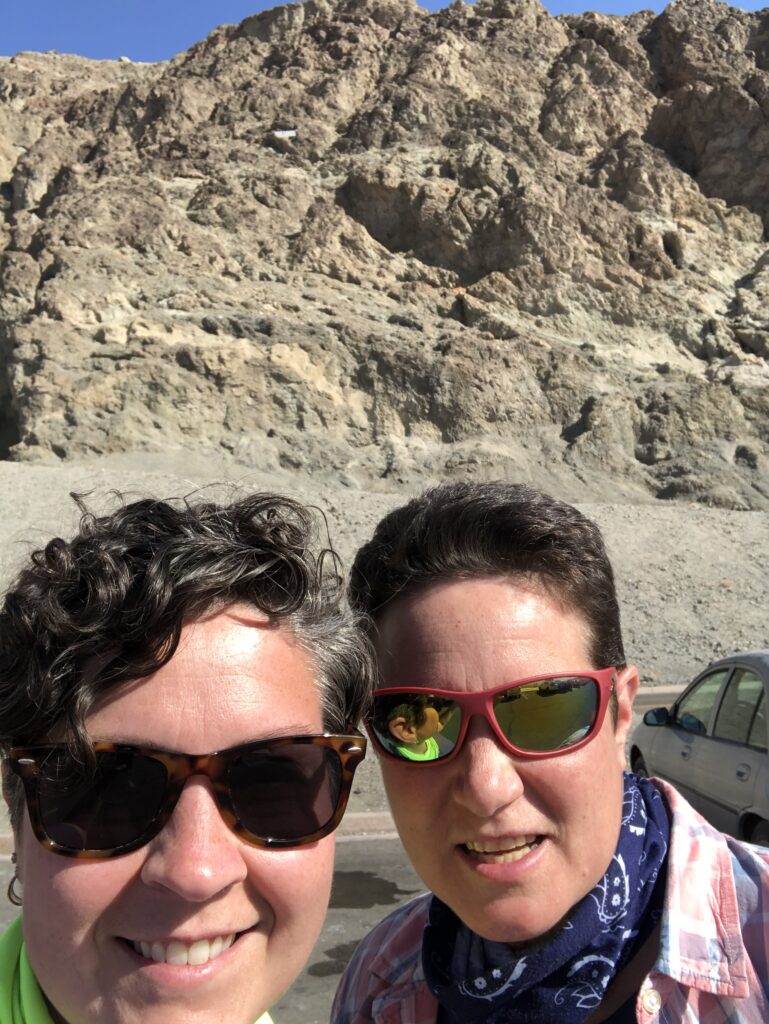
Look closely to the ridge behind us, about halfway up there is a small white sign. That sign is 282 feet above us and indicates sea level.
Lake Manly
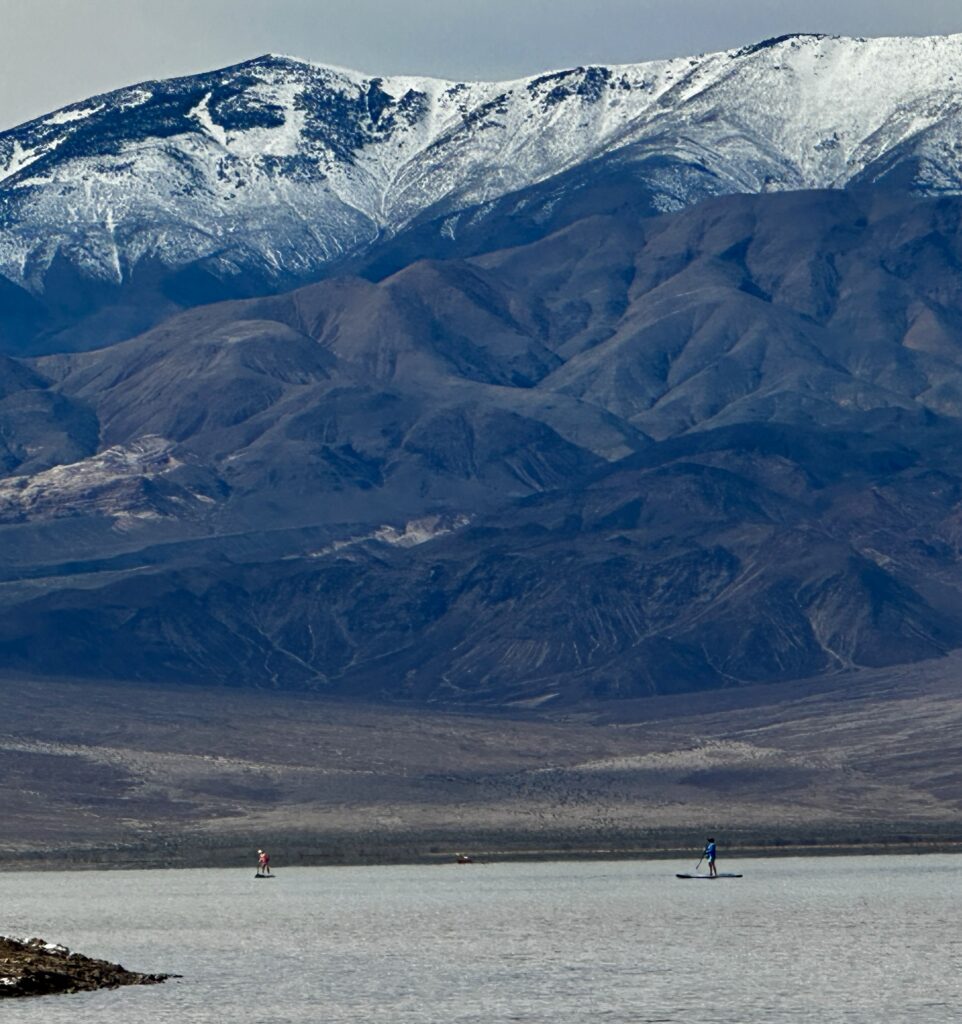
Not your typical picture of bad water basin! It was February of 2024 and we were staying at an RV park in Las Vegas, watching the local morning news. There was a story about Death Valley and Lake Manly, I was immediately curious. What is this Lake Manly? An incredible amount of rainfall, which weather forecasters called an atmospheric river, fell in the watershed of Bad water basin. This temporarily re-formed Lake Manly, not to its original grandeur but up to a foot deep in many areas. More than enough water to float a kayak or paddle board. It had been almost twenty years since the lake had been present in the basin.
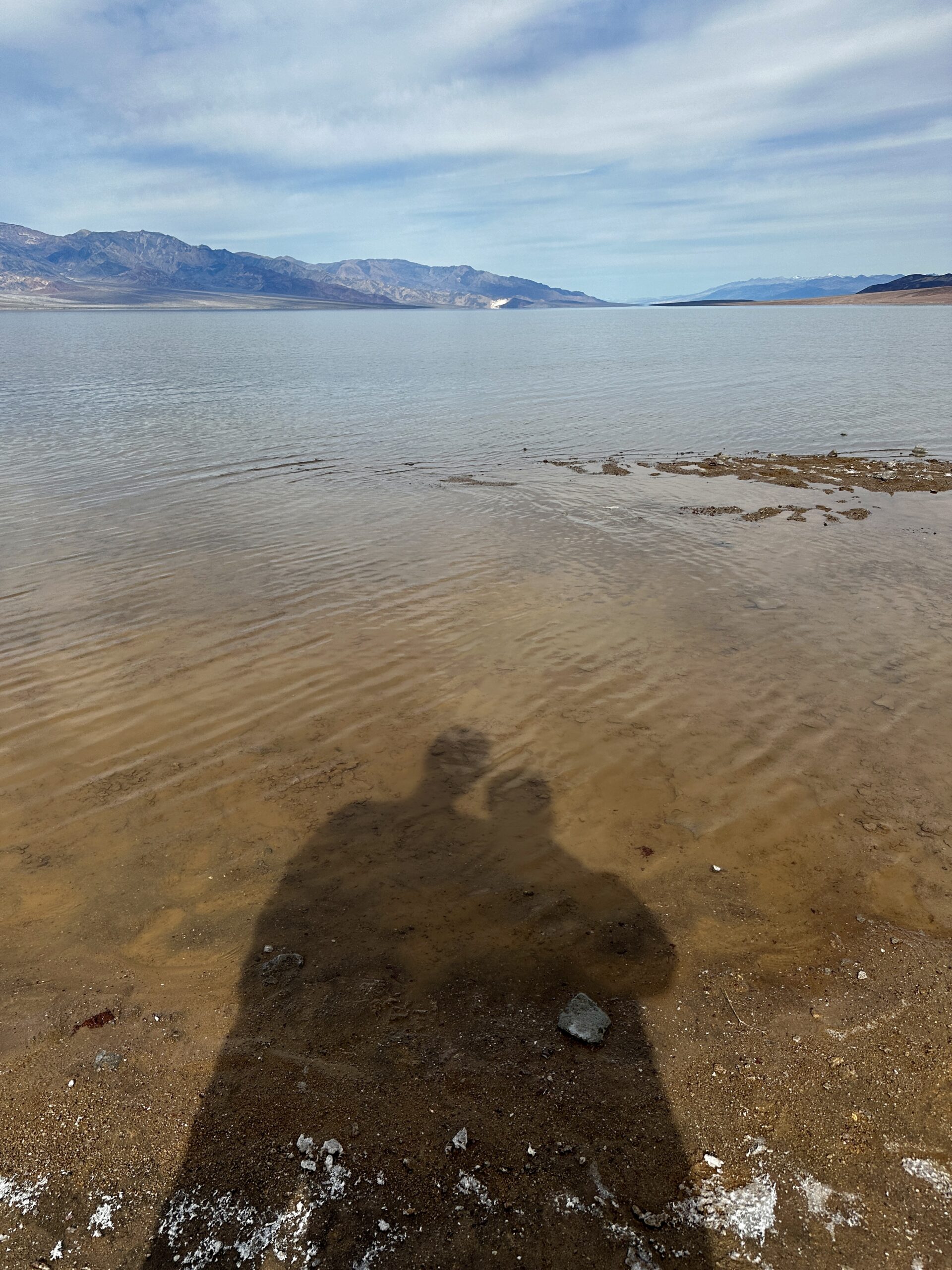
Jess and I decided it was something we wanted to see. We grabbed our gear, made lunch and packed up Teddy for the drive. A loop through Parahump, to Furnace creek and Badwater basin. Then out of the park to the north through Beatty and around the incredible Mt. Charleston back to Vegas. As in previous visits, a drive up to Dante’s peak to start off the day. I’m not sure I can visit this magnificent place without a stop at Dante’s peak. We were excited to see Lake Manly from above and proceeded to the valley to take a closer look.

Furnace Creek
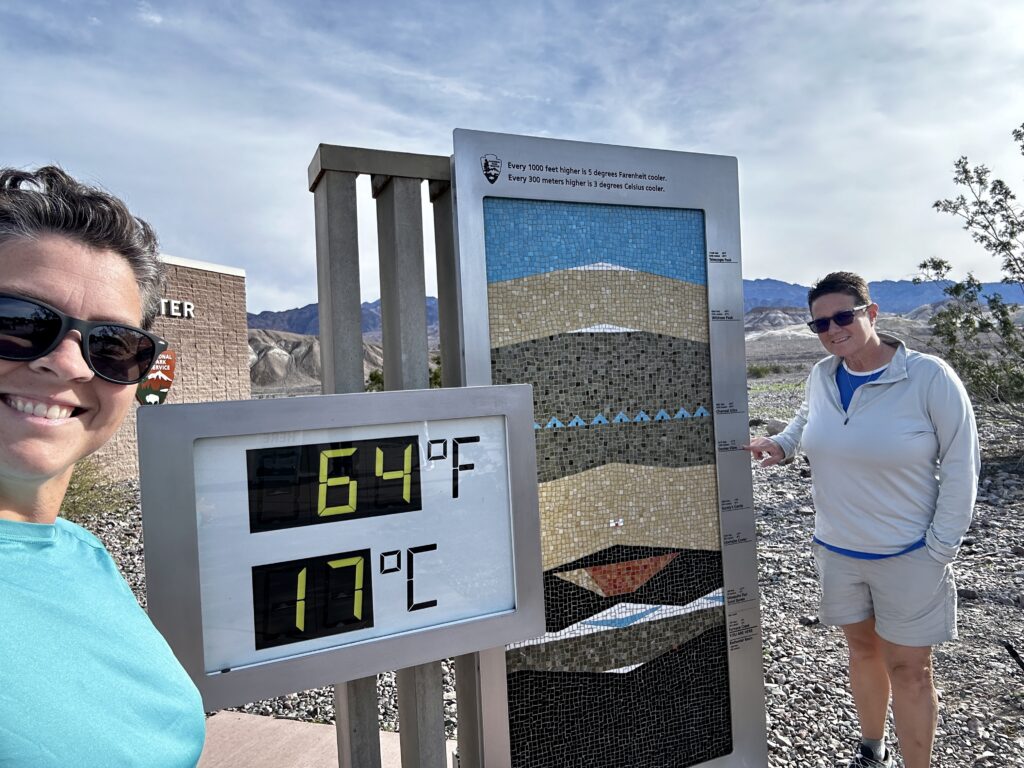
Furnace Creek is a hub of activity in Death Valley, a true desert oasis. The rangers and volunteers at the visitors center can answer any questions and help you plan an amazing trip through the park. The Ranch at Death Vally has many amenities including a spring fed pool. There is a golf course, restaurants, post office, general store, gas station, and more.
Furnace Creek also has a campground with flush toilets, drinking water, and dump stations. There are also many other campgrounds throughout the park with various services. Check-out the National Park website for more information.
Harmony Borax works is also close to Furnace creek. Harmony Borax Works is important in the history of Death Valley. Borax was discovered near Furnace creek in 1881. The ore processing was built and at its height employed forty men and produced three tons of borax everyday. Because of the difficulty of working in the desert and getting the borax to market, Harmony became famous for using “20-mule teams”. The plant was only in operation until 1888 when the owner ran out of money. The “20-mule team” became the symbol of the borax industry.
Artists Palette

Artists Palette is a nine mile one-way paved road, through some of the most beautiful, and most colorful concentration of rocks I have seen. The road is curvy with deep dips and vehicles over twenty-five feet are not allowed. However, you will sometimes be sharing the one-lane road with bicycles. Fortunately, you’ll have no reason to hurry, the mountains, and canyons are amazing. We stopped in the small parking area and hiked a short distance to the beautiful place in the picture below. We never skip a visit to artist palette, one of our favorite places.
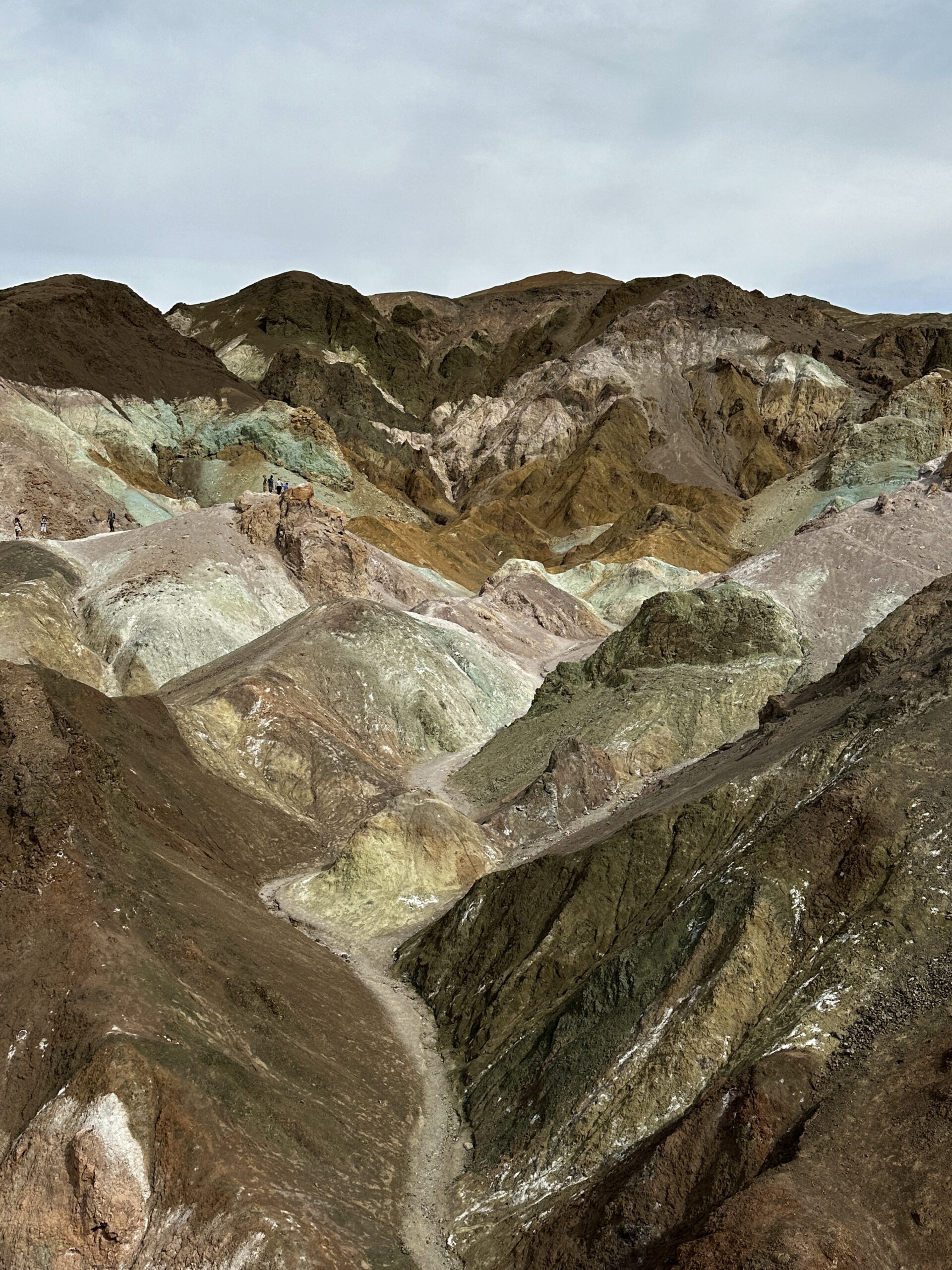
Mesquite Flat Sand Dunes
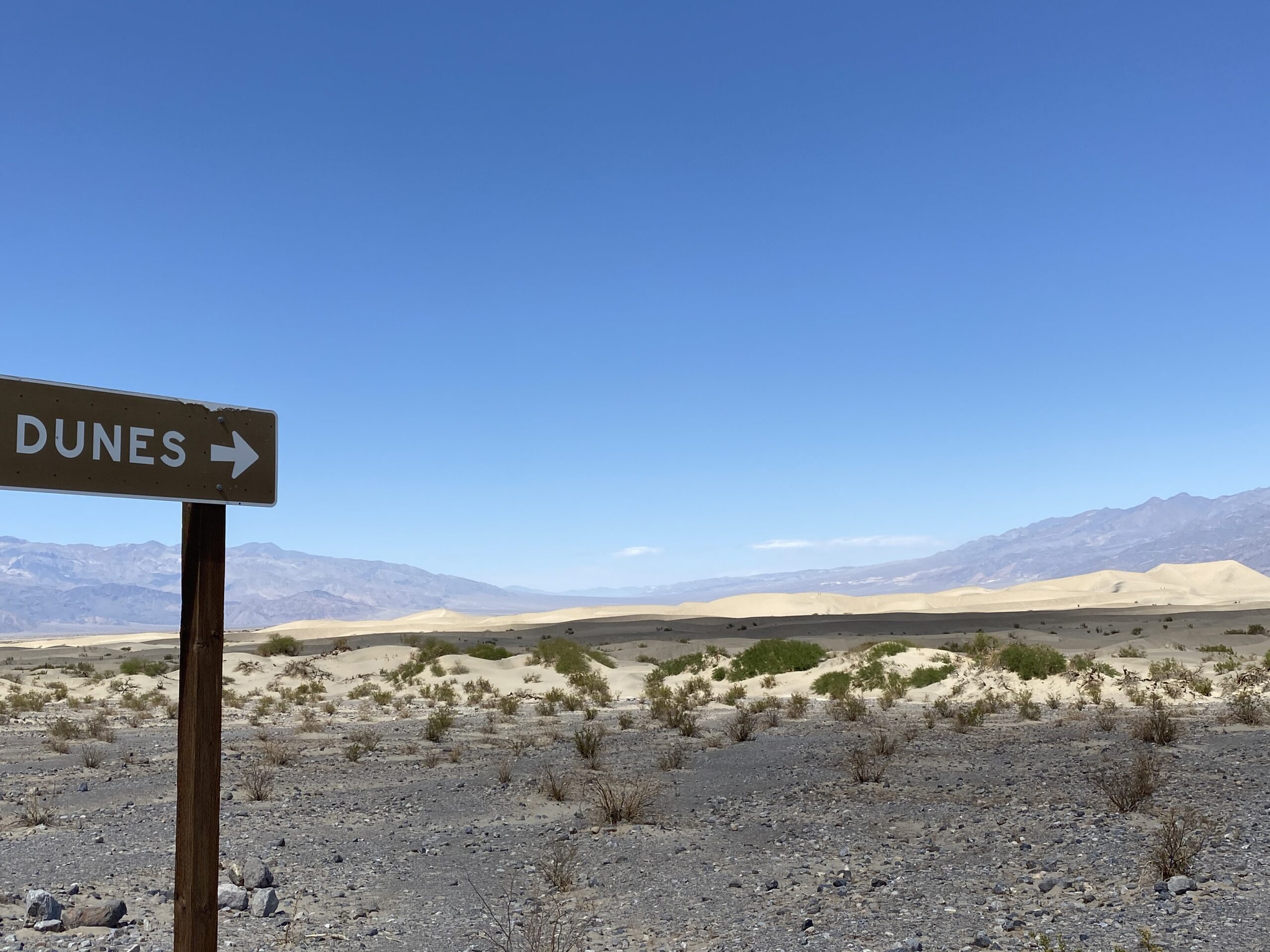
The mesquite flat sand dunes are north of Furnace creek. They are the first sand dunes we had visited. Since, we have been to Great Sand Dunes in Colorado, and White Sands in New Mexico. It’s amazing to me the differences in the dunes. Three things are required to form Sand Dunes, the obvious sand and wind, but also there needs to be a barrier like a mountain to prevent the sand for blowing away and forming dunes instead.
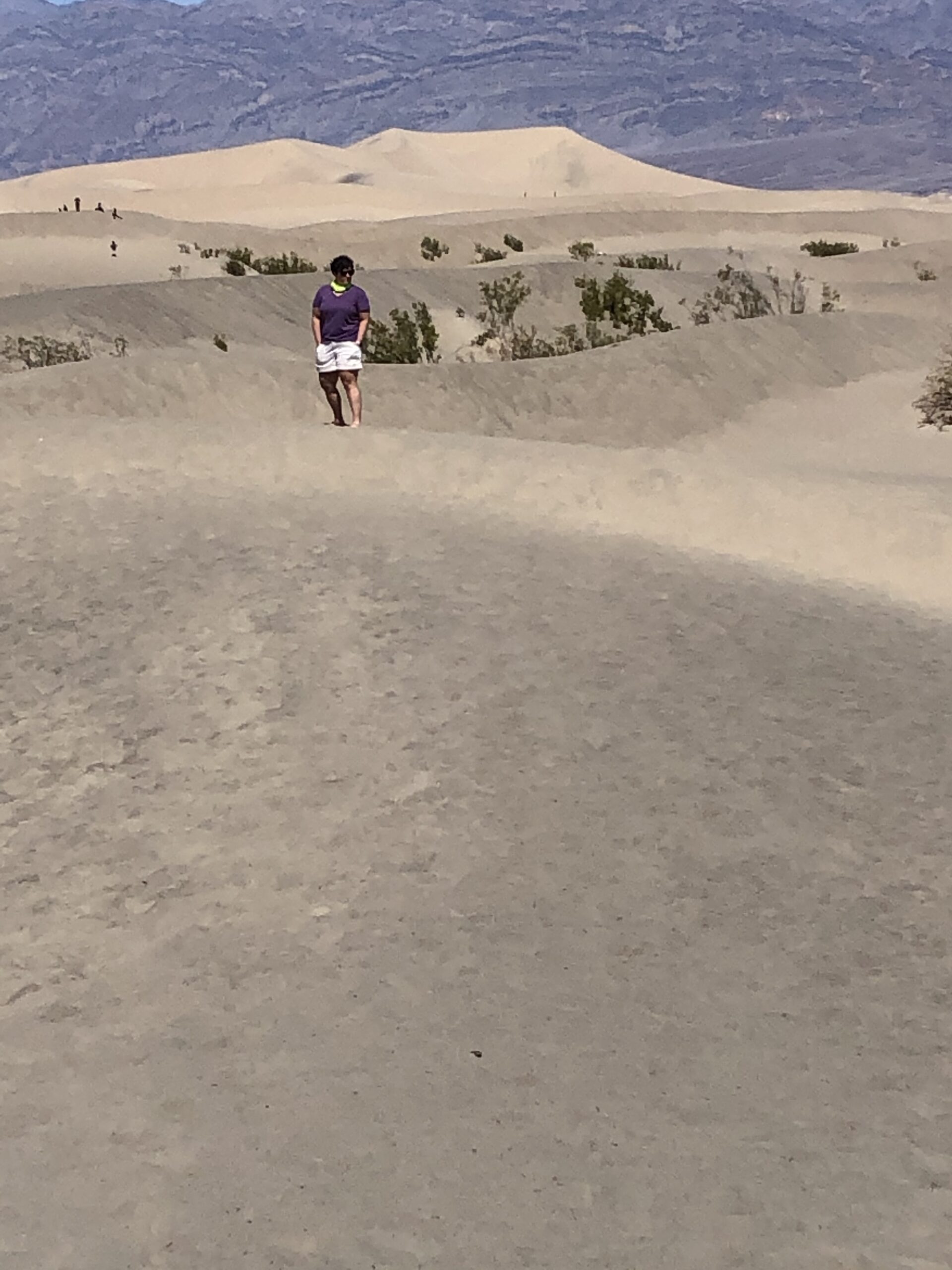
Mesquite trees thrive throughout the dunes, giving the area its name. The trees ability to grow in the shifting sands provides food and habitat for other desert dwellers and is an important asset. We took our shoes off and ran around like kids in the biggest sand box I had ever seen. Definitely worth a visit, especially if you have never seen sand dunes first-hand.
Keane Wonder Mill and Mine
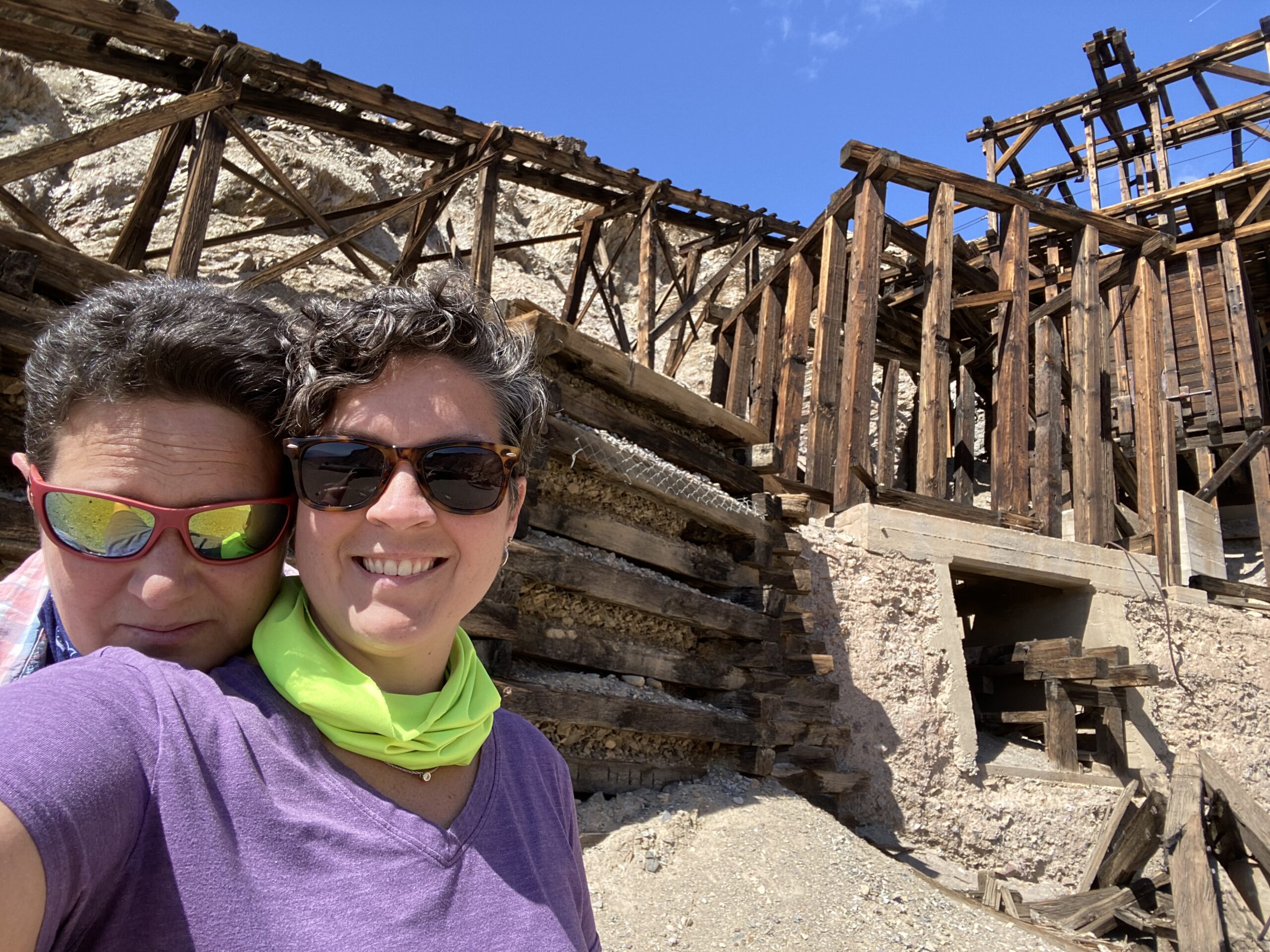
Keane Wonder mill and mine began in the 1900’s during the mining boom. The mine was one of the most successful mines in Death Valley. There was a vein of rich ore which the miners removed to the point of instability. The mine changed hands over the years and went through various stages of activity. Finally in 2005 all mining operations ceased.
One of the mines unique features was a gravity powered aerial tramway. The mine fell into disrepair over the years, but the park department reopened the mine site in 2017. It was a short walk from the parking lot to the mine site. There was so much to explore! We spent an hour or so reading all of the information boards and trying to understand their process. Unfortunately, we did not find any gold!
Death Valley National Park Map
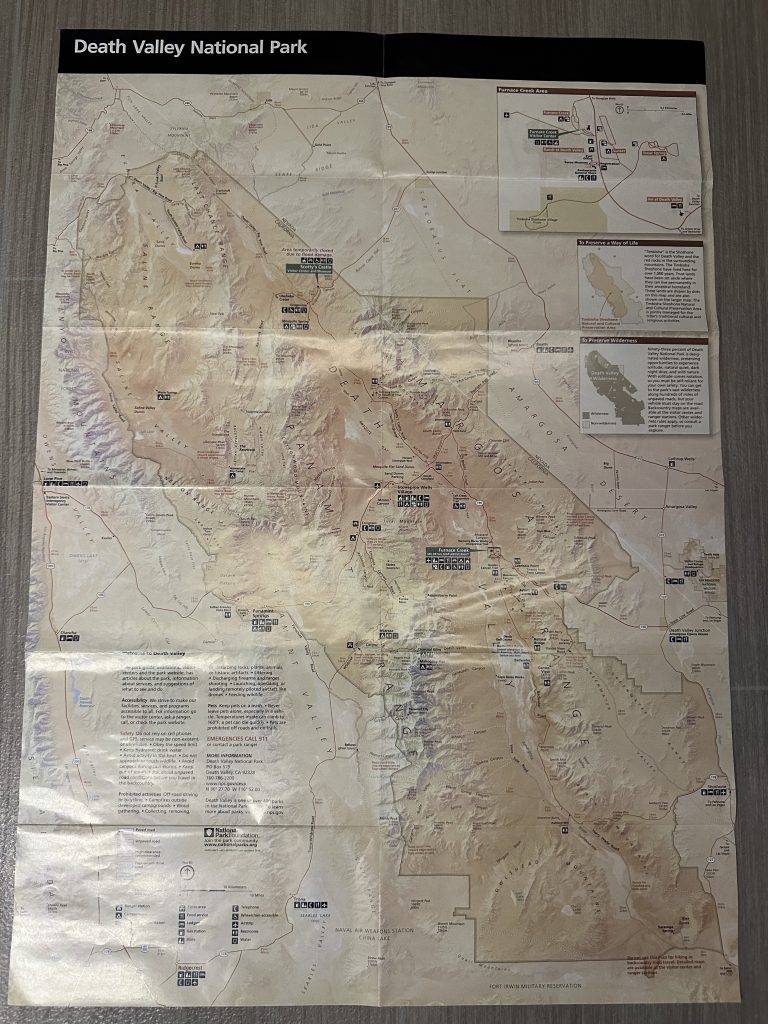
Death Valley is amazing and one of our favorite places. Hopefully, I can brave the National Park reservation website and score us a campsite at the very popular Furnace creek campground in the future. Thus, finally allowing us the opportunity to truly explore and hike in the park.
Please keep some basic safety information in mind when visiting the park. Water, water, water whether hiking or just driving through the park, water is you’re most valuable asset. If you’re going to hike, do it early in the day, before the full effects of the sun are felt. Hike with a friend and ensure someone always knows your plan and expected time of return. Know your boundaries and fitness level and stay within it. Be aware of your surroundings and know where services are located.
If you are spending a week in Vegas and have opportunity to rent a vehicle and visit Death Valley, it’s definitely an experience, especially if you have not spent time in the desert. That first visit exposed me to new landscapes which fueled my early desire to travel and explore. Additional visits with family and friends have only increased my love of the wonders which can be found in this magical place. For additional information about the Las Vegas area check out our Las Vegas More than Gambling Parts 1, 2, 3, and 4. Live Simple Live Happy